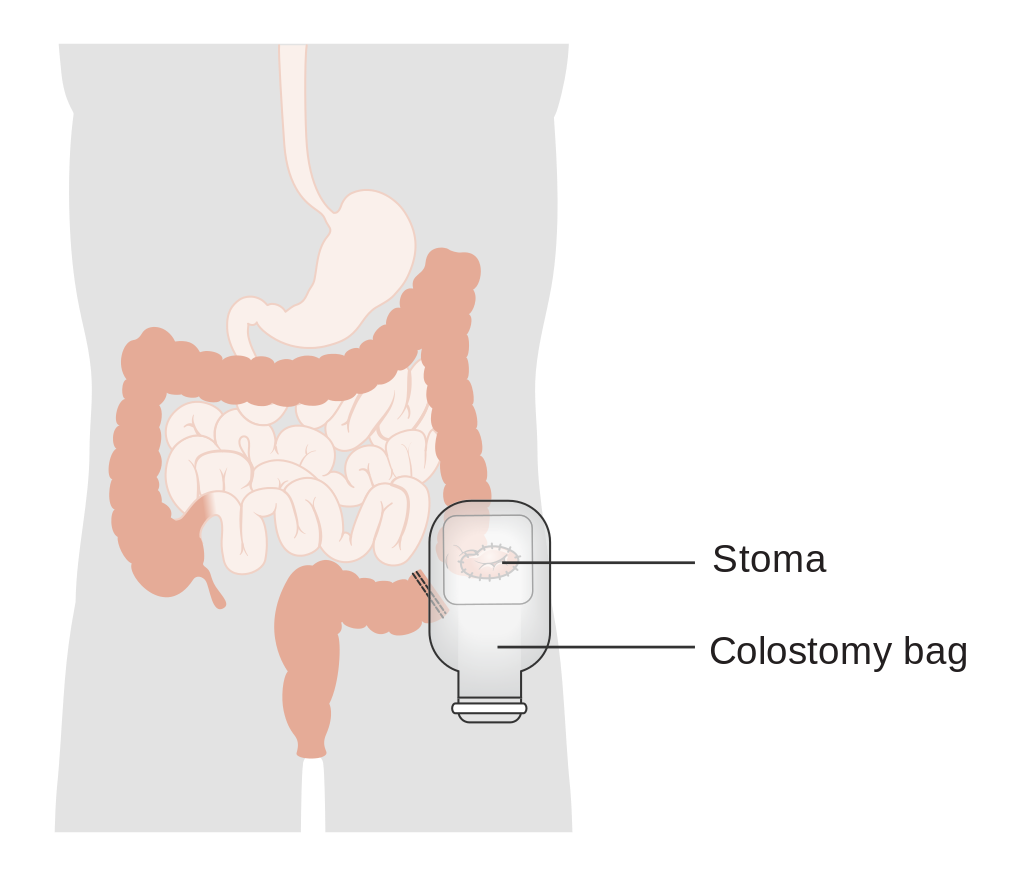A colostomy and ileostomy are the two GI ostomies that aim at diverting the passage of feces towards the abdominal wall, bypassing the diseased section, which is either removed or rested during surgery. An ileostomy refers to an ostomy created on the small intestine, whereas a colostomy refers to an ostomy on the colon.

The question is, why would you need a GI ostomy? Several health conditions might necessitate you to undergo GI surgery. These conditions or reasons include ulcerative colitis, diverticulitis, Crohn’s disease, cancer, obstruction, and injury.
What is a colostomy?
A colostomy is when the surgeon decides to bring a part of the colon out through the abdominal wall to create the stoma, which is an opening to pass out the stool. You get a colostomy when a part of your colon is healthy enough to function. The surgeon will either remove or rest the diseased section of the colon.

There are four types of colostomies, depending on the location of the stoma on the colon. For instance, a stoma on the ascending section of the colon creates an ascending colostomy. The other three types of colostomies include the transverse colostomy, descending colostomy, and sigmoid colostomy.
What is an ileostomy?
An opening in the abdomen to bring the end of the small intestine out is known as an ileostomy. The surgeon creates this GI ostomy by disconnecting the small intestine from the colon and bringing its end out through a cut in the abdomen to create a stoma.

Stool types
The type of stool you pass out depends on where in the bowel you have got the stoma. A more distal stoma in the bowel will result in a more formed stool. Similarly, a more proximal stoma will pass out the more liquid stool. An ileostomy bypasses the entire colon, meaning that it generally passes out a more watery stool. Because this stool has a high content of corrosive digestive enzymes that could have been absorbed in case the colon was intact, it can pretty harsh to the skin around the stoma.
The stool consistency of a colostomy varies with the types of colostomy.
- An ascending colostomy is nearer to the small intestine, so it passes out more watery stool.
- A transverse colostomy results in the partly formed stool.
- The descending and sigmoid colostomies pass out almost fully formed stool.
Nursing care
Nursing care starts before surgery. The nurse has to tell the patient about what to expect with a stoma. They also have to teach the patient about ostomy pouches. They generally follow instructions of MD when it comes to preoperative medication.
After surgery, the nurses have to monitor the patient’s stomal output. They look at the electrolyte content passing out along with the stool. It helps them assess the risk of dehydration.
The stoma should be red or pink and moist. Nurses notify doctors when the stoma changes its color to pale pink or dark red.
Diet after surgery
The doctor will generally suggest you follow a modified diet plan until your bowel recovers after surgery. After your bowel recovers, you can introduce your favorite foods back into your diet through a gradual process. You may have to have high water intake to make up for the loss of water that happens during every stool evacuation.
You can talk to your nurse or doctor if you have any questions regarding any aspect of ostomy care.